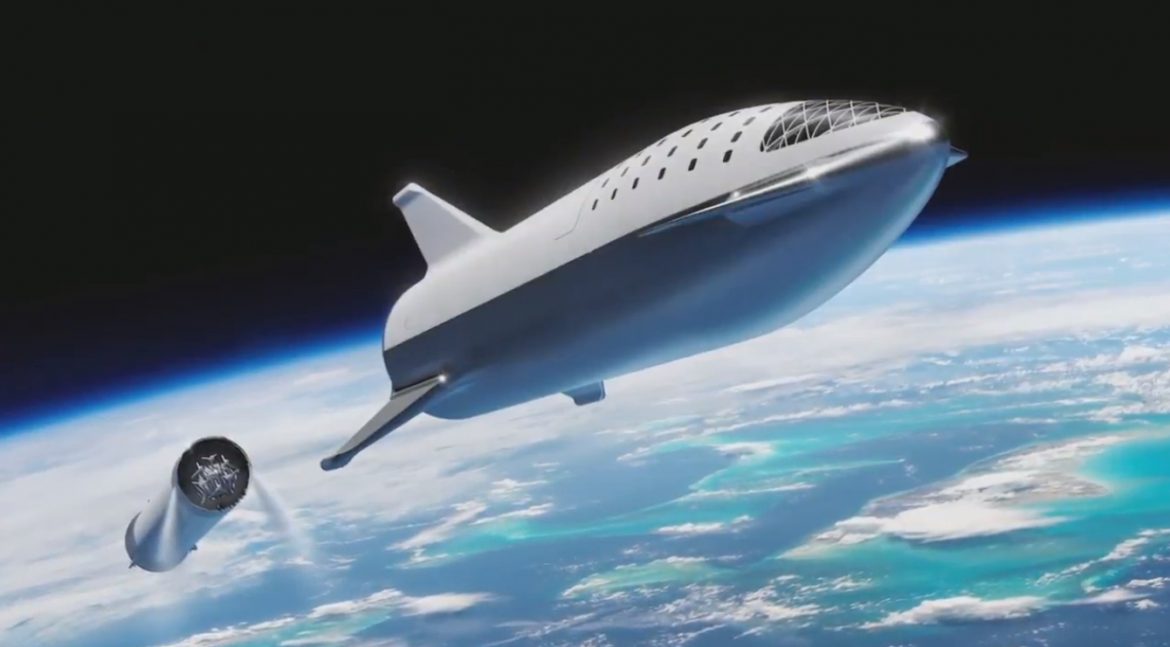BFR spacecraft.jpg

Part 3 of 5 Parts (Please read Parts 1 and 2)
The creation of a huge carbon fiber structure faces a number of serious technical challenges. The epoxy used to create carbon fiber composites cures at room temperature. Each different kind of epoxy has its own rate of curing. The type of epoxy that is most often used in manufacture of airplane sections will only last for about four weeks before it has cured too much to be applied. That means that sections of the BFR will have to be built within about a month.
Carbon fiber composites can be damaged by coming into contact with super cooled liquids such as the liquid methane and liquid oxygen that will be used to fuel the BFR. In 2016, a SpaceX rocket was destroyed on the launch pad because a carbon-fiber-wrapped tank filled with super-cooled liquids exploded. Musk said that the tank failed due to cracking and leaking. Last year, Musk said that SpaceX had created a stronger tank that could handle the very low temperatures of the fuels.
In order to test their new tank, SpaceX built the biggest carbon-fiber-composite fuel tank ever constructed. They put it on a barge, towed it out to sea, filled it with super-cooled liquids and increased the pressure in the tank until it exploded.
Another big potential problem is the fact that if the epoxy does not cure properly and completely, there could be flaws that would be very hard to detect that could bring missions to a disastrous end. In order to prevent this, carbon fiber composites have to be squeezed under very high pressure to collapse voids, push out bubbles and ensure strong bonds.
Autry said, “That's typically done with a giant pressurized oven, like a pressure cooker, that's called an autoclave. But these things are very expensive.” Marco Cáceres is a senior space analyst at the Teal Group. He said that it cost Boeing almost three hundred million dollars to build a huge autoclave for pressure treating sections for the 787.
An autoclave big enough to cure sections for the BFR would cost much more than the Boeing autoclave. He suspects that SpaceX may try a different approach to curing sections of the BFR. He says that SpaceX could make an oven to cure the BFR sections. This could be as low as one tenth the cost of an autoclave. SpaceX could put each cured section of the BRF in a giant plastic bag, draw all the air out to squish the carbon-fiber-layers together and then heat the bag in a giant oven.
Following the curing and pressure heating of the sections of the BFR, the mandrels would be taken apart and removed from the sections of the BRF and then the several sections would be fused in some way to create a single fuselage. Boeing used fifty thousand metal fasteners to connect the segments of the fuselage for the 787. Many of the fasteners had to be replaced and several of the first planes produced failed pressurization tests. These problems would be much worse for a spacecraft. Temperature differences encountered by different components of a spacecraft can be hundreds of degrees. Different materials used in the construction of spacecraft expand and shrink at different rates under temperatures changes.
Please read Part 4